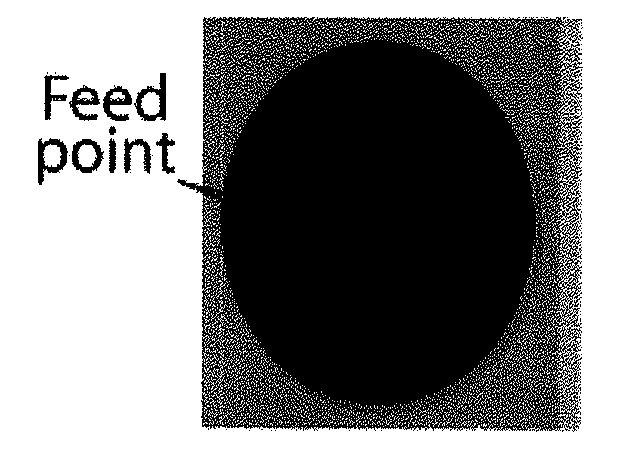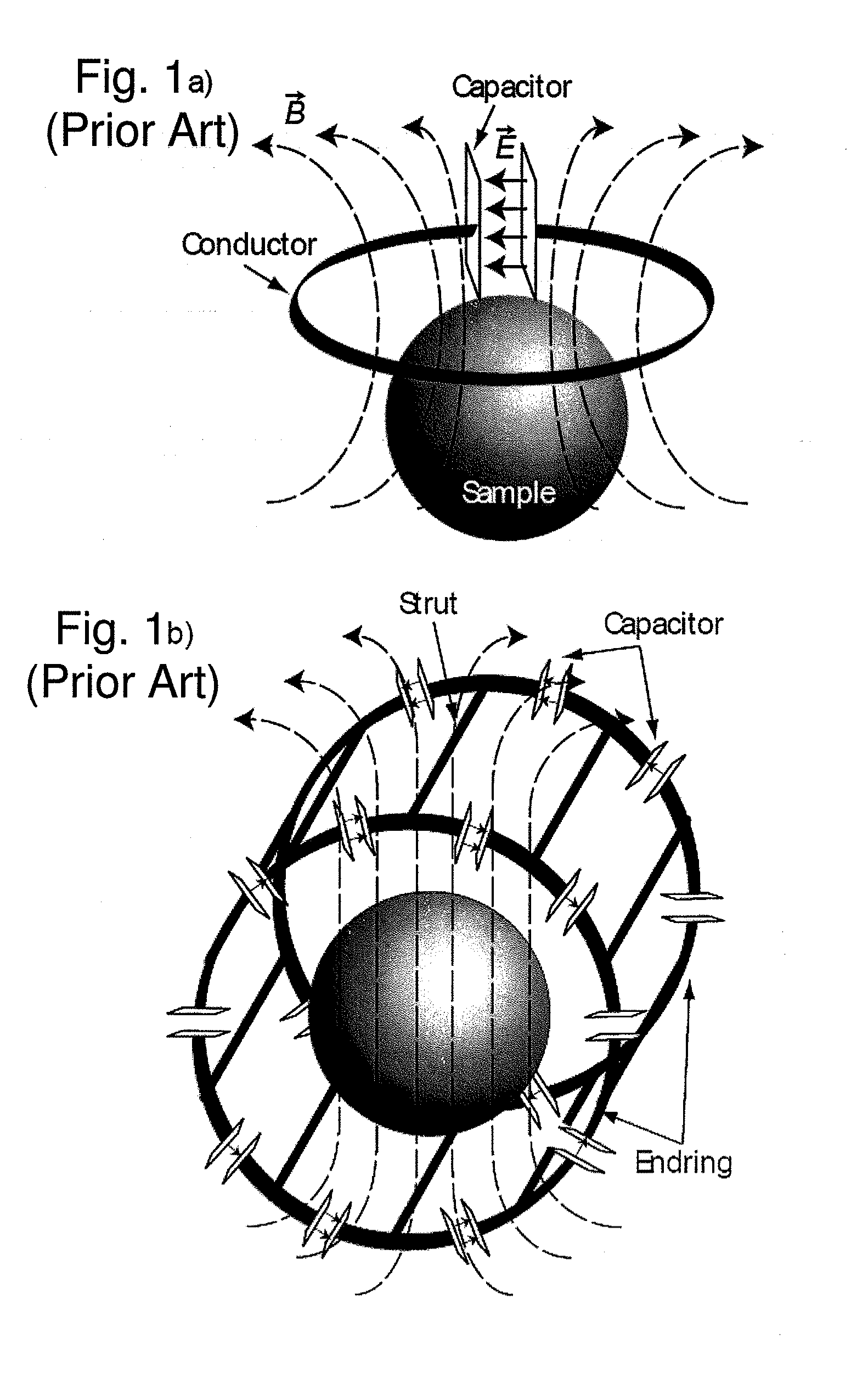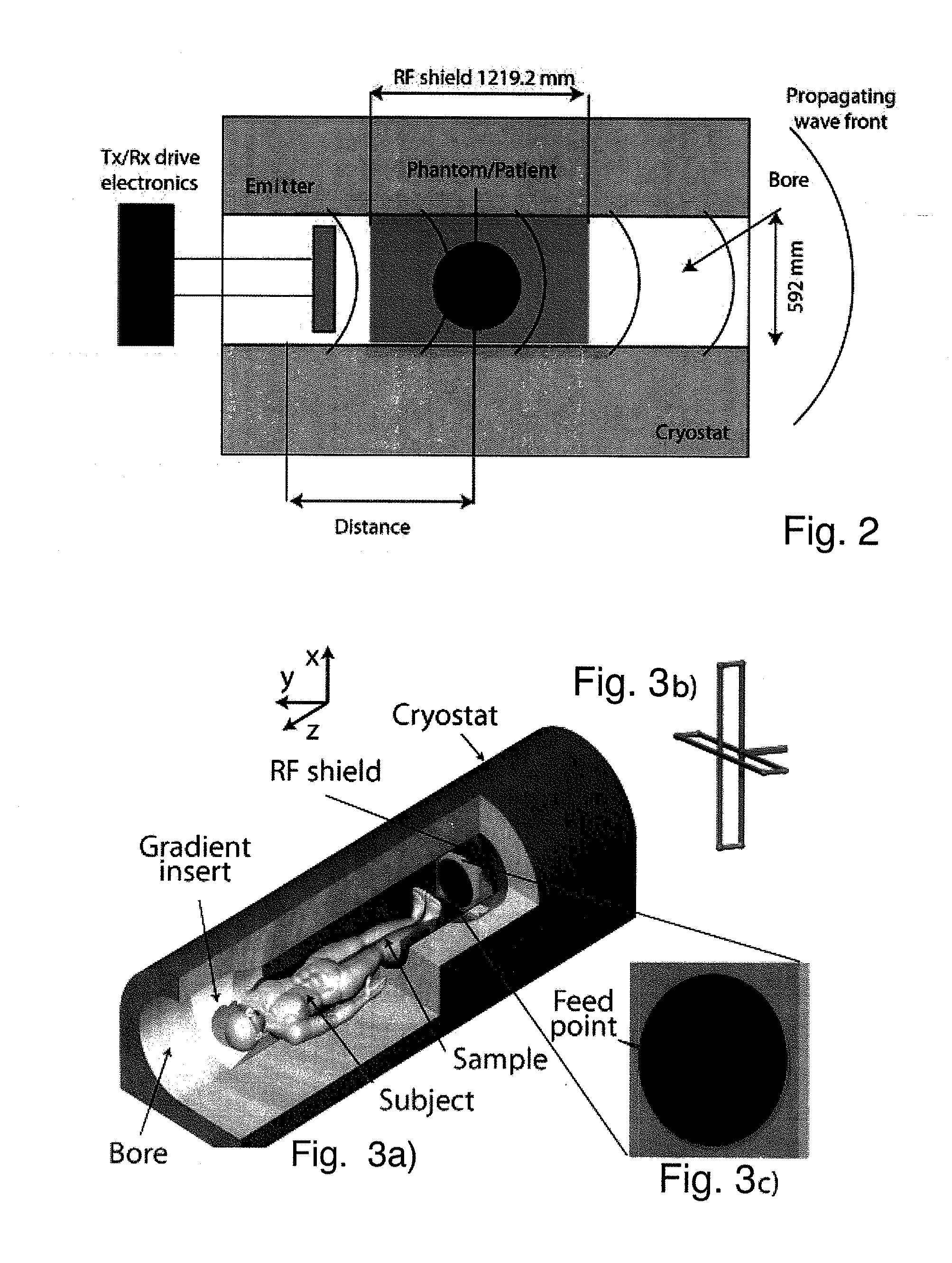Travelling-wave nuclear magnetic resonance method
a nuclear magnetic resonance and travel-wave technology, applied in the field of nuclear magnetic resonance imaging and/or spectroscopy, can solve the problems of increasing static magnetic field strength, reaching their operating limits, and poor application prospects, and achieves less efficiency, simplified safety validation, and more stable electrical performance of remote probes
- Summary
- Abstract
- Description
- Claims
- Application Information
AI Technical Summary
Benefits of technology
Problems solved by technology
Method used
Image
Examples
example 1
Travelling Wave MR on a Whole Body System
Theory
[0081]A propagating plane wave in free space would have maximum homogeneity and transverse polarization down to arbitrarily small wavelengths. Whereas a freely propagating wave cannot be established inside the bore of an NMR magnet, a travelling wave can still be guided by the bore and its RF shield. The modes of the empty bore of typical whole-body 7 Tesla systems (see FIG. 5a) have cutoff frequencies slightly above the proton Larmor frequency. Therefore filling the bore with a preferably lossless dielectric material (in addition to the subject or sample, FIG. 5c) can reduce the cutoff frequencies of the first modes sufficiently ([2]) to support wave propagation at the proton MR frequency.
[0082]In order to prevent axial standing waves stemming from reflections due to guided mode mismatches at the dielectric interfaces of the subject, a di-electric load tapering towards the subject can be placed at the center of the bore (FIG. 5d).
[0083...
example 2
Phantom Experiments
[0089]Further phantom experiments using bottles filled with mineral oil are shown in FIG. 8. The field of view of the images is 530 mm in z direction. The slice of FIG. 8a) was taken while the bore was able to support a travelling wave with minor reflections at both ends of the sample. This was achieved by additional oil bottles of the same diameter placed in the axis of the bore matching the impedance of the modes in the bore to the ones in the sample-filled bore. For comparison the same slice was taken without the matching oil bottles present, see FIG. 8 b). The longitudinal profile taken from both slices depicted in FIG. 8d) show clearly the enhanced homogeneity in axial direction while the transverse field distribution stays unchanged, as shown in FIG. 8c).
example 3
In Vivo Imaging of Feet
[0090]An example of an in vivo application is given in FIG. 9, which demonstrates MR imaging of a foot of a healthy human subject. The image of FIG. 9 a), which was taken in the travelling wave mode, has comparable quality to the reference image shown in FIG. 9b), which was taken with a conventional 3 T device (birdcage-type body resonator operating at 128 MHz, i.e. the proton MR frequency at 3 T) in near-field mode using the same sequence timings and parameters. However, the field of view in the travelling wave mode was found to be substantially larger and was only limited by the range of the encoding gradient fields. Moreover, an improvement in SNR as compared to the near field mode was found for the travelling wave mode.
Parallel Travelling Waves
[0091]In the examples described so far, a parallel imaging concept was implemented by using a patch antenna with two ports to excite the two degenerate TE11 modes of a circular waveguide, which are the only modes bel...
PUM
 Login to View More
Login to View More Abstract
Description
Claims
Application Information
 Login to View More
Login to View More - R&D
- Intellectual Property
- Life Sciences
- Materials
- Tech Scout
- Unparalleled Data Quality
- Higher Quality Content
- 60% Fewer Hallucinations
Browse by: Latest US Patents, China's latest patents, Technical Efficacy Thesaurus, Application Domain, Technology Topic, Popular Technical Reports.
© 2025 PatSnap. All rights reserved.Legal|Privacy policy|Modern Slavery Act Transparency Statement|Sitemap|About US| Contact US: help@patsnap.com



